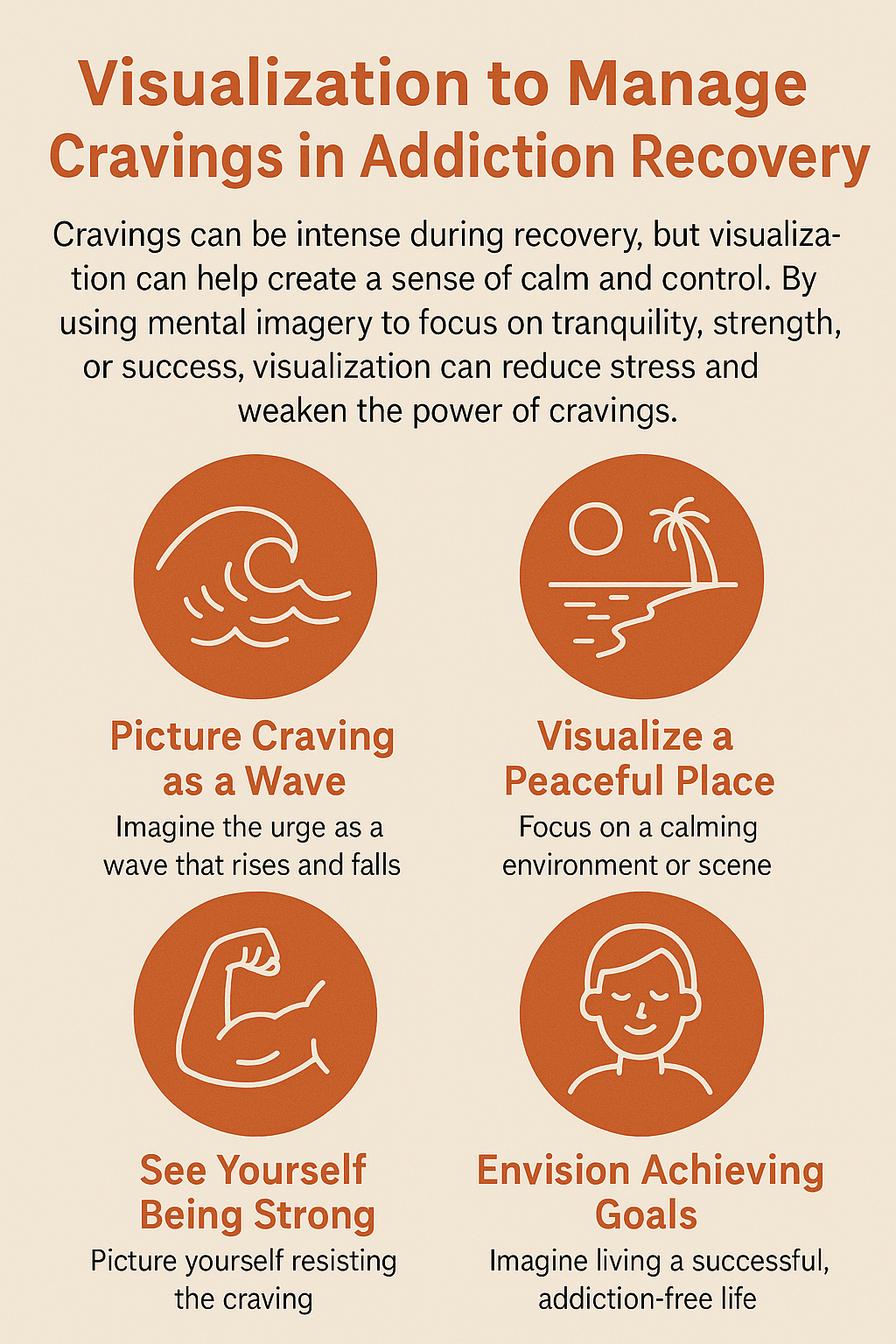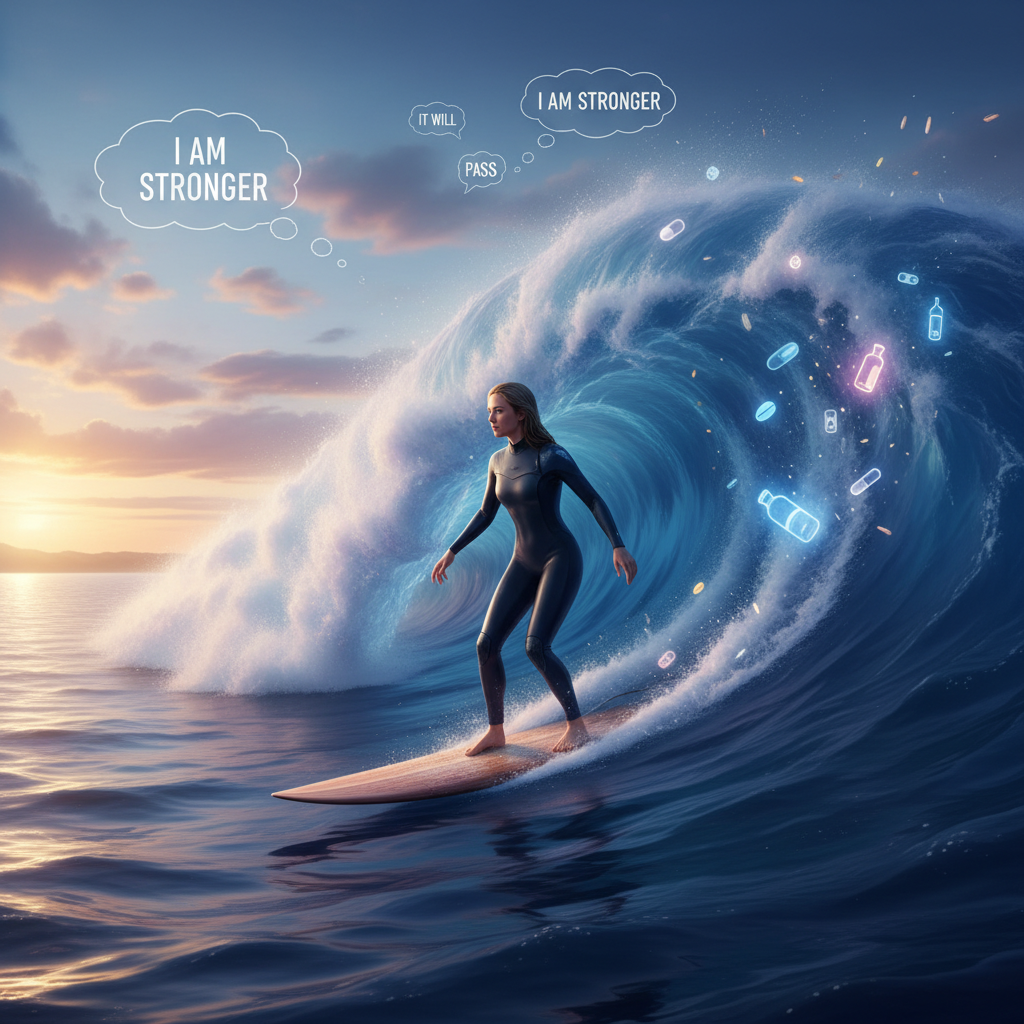Cravings can hit out of nowhere, and when they do, it often feels like your willpower disappears in seconds. I’ve been there—whether it’s late-night snacking, the sudden urge to smoke, or the impulse to reach for something you’re trying to avoid. Cravings tend to emerge at your weakest moments, often fueled by stress, boredom, or habit. But one tool that has consistently helped me—and many others—is visualization. It’s a simple yet powerful mental practice that shifts your focus, reduces the emotional intensity of the craving, and strengthens your ability to make different choices. By picturing calming scenes, your desired future, or even visualizing the craving shrinking in power, you can interrupt the cycle before it takes over. This guide walks you through effective visualization techniques to help you manage cravings in real time and build healthier habits that last.
Understanding Cravings and How Visualization Helps
Cravings aren’t just about sheer willpower. A mix of biological, psychological, and environmental factors triggers them. It’s completely normal to feel like you lack control at times. But when you train your mind with visualization, you give yourself a few more tools to find your footing when those urges show up.
In essence, visualization relies on focused imagination. You create mental images or short scenarios that support a positive outcome. Our brains actually respond to these mental pictures almost the same way they would to a real event. That detail makes visualization a standout method for “retraining” your instinctive response to intense cravings.
Counselors and therapists often use visualization to help people ease anxiety, sharpen their focus, and stay committed to their intentions. This approach fits perfectly when you’re dealing with cravings, since visualization lays out a calmer game plan beyond just white knuckling your way through.
Popular Visualization Techniques to Tame Cravings
Over the years, I’ve checked out several visualization methods. Some are especially easy to pick up and surprisingly effective. Here are a few favorites to have on standby when cravings hit:
- Beach Visualization: Envision yourself strolling along a serene, sunny beach. Imagine the sand under your feet and the gentle rhythm of waves. Focus on this calm in place of your craving.
- Craving Wave: Think of your craving as a wave that rises, peaks, then gradually slips away. See the urge reaching its height and then fading, as a reminder that no craving lasts forever.
- Future Self: See yourself after overcoming the craving. Picture the benefits—better health, more confidence, or simply feeling accomplished—and really connect with that feeling.
- Balloon Release: Visualize your craving as a balloon in your hand. Let it lift and float away, shrinking as it drifts out of sight. This can bring a feeling of lightness and release.
- Doorway Detour: Imagine a doorway that leads straight to your craving. Instead of entering, you pause, notice your urge, and calmly choose a different, better path.
Step-by-Step Guide to Practicing Visualization for Cravings
If you haven’t tried visualization before, it may feel awkward at first. However, the key is to keep it light and practice regularly. It gets easier each time—no need for perfection.
- Find a Quiet Spot: Settle into a comfortable spot where you won’t be disturbed for a few minutes.
- Take a Few Deep Breaths: Close your eyes and slowly inhale and exhale five times. Let your body relax.
- Pick Your Visualization: Choose one of the scenes above or create your own. Try to make it as clear as you can in your mind.
- Engage All Your Senses: What Can You See? What sounds are there? How does the air feel, and are there any scents? The more detail, the more real it feels.
- Stay With It: Linger in your scene for at least a minute. Notice if your craving feels a touch lighter or less urgent.
- Refocus on the Present: Gently open your eyes, take another breath, and see how you feel.
The more often you run through this process, even just briefly, the stronger your mental “muscle” becomes for handling cravings.
Challenges and Getting Through Them
Like any new skill, visualization brings its own set of hurdles. I’ve definitely bumped into a few! Here are some common challenges—and tips that might help:
- Trouble Focusing: If your thoughts keep wandering, don’t sweat it. Notice the distraction, then gently guide yourself back to your scene, as if steering a ship toward calm seas.
- Lack of Immediate Relief: Sometimes, the craving won’t vanish instantly. But even a small break or a slight drop in intensity is progress.
- Imagination Feels Fuzzy: You don’t need high-def mental images. Even a blurry sense or an emotional “picture” does the job. Using words or focusing on a single sensation can also be helpful.
- Habits and Triggers: Certain cravings are often linked to specific routines or environments. Mix visualization with other tweaks—such as adjusting your settings or taking a quick distraction—to boost your results.
Patience Pays Off
Building this visualization habit is like learning any new routine: it starts slow, but every attempt makes future ones smoother. Stick with it, and those small shifts really add up.
Visualization for Different Types of Cravings
The style you use can depend on the craving you face. Here are some ways I switch things up:
- Food Cravings: Try the “Craving Wave” or “Future Self” approaches. Picture how satisfied you’ll feel skipping that treat.
- Nicotine or Smoking Urges: Go for the “Balloon Release”—see the urge float off and get smaller, giving you a sense of control and freedom.
- Screen Time Temptations: The “Doorway Detour” is a good fit. Notice the urge, then walk away from the virtual “door” and choose a refreshing activity instead.
Switching up your approach keeps visualization interesting and helps your mind stay nimble.
Next-Level Visualization Tips
After you get the hang of the basics, you might want to add some twists for extra power:
Add Movement: Try “moving” within the scene—like walking along your mental beach or exploring a peaceful field. It brings the scene to life.
Connect to Good Feelings: Focus intentionally on the pride, calm, or happiness you get from besting your craving, not just on resisting the urge.
Add Affirmations: Pair your scene with a simple phrase such as “I’m in control” or “This feeling will pass.”
Keep a Journal: Jot down your experiences after each session. Keeping track of what works, what images pop, and how you felt helps you fine-tune your method.
How Visualization Works in Real Life
Visualization isn’t just some feel-good idea—research backs it up. Studies in psychology have shown that using imagery can help reduce cravings and make healthy habits more effective. It works because you’re teaching your brain to build new thought pathways, making the old tug of habit less automatic over time. For instance, people trying to quit smoking who pictured themselves living smoke-free were more likely to report lighter urges and a stronger will to stay quit.
In my own life, I’ve put these ideas to work when it comes to coffee. On days when that third cup called my name, I took a minute to picture myself relaxing with herbal tea. That quick mental switch didn’t flip off the craving, but it did shrink it just enough for me to pause—and often, that’s all I needed to stick with my plan.
- Changes in Habits: Regular visualization helps you react differently, almost automatically, the next time cravings appear.
- Stress Relief: Imaginative scenes, such as beaches or forests, can have a calming effect, significantly reducing the intensity of cravings.
- Boost in Confidence: Even just pretending success in your head can make you believe you’re capable of getting through challenging moments.
Frequently Asked Questions
If you’re starting with visualization, these are some of the things folks usually want to know:
Q: How long does it take for visualization to become helpful?
A: Results vary. Some people find that their cravings subside within a week, but for others, it may take longer. The important thing is to stick with it and keep practicing—it will become easier over time.
Q: Do I need meditation skills for this to work?
A: Not at all! Visualization is about your imagination and doesn’t require meditation experience. Even if you can only focus briefly, just pausing and picturing your scene offers benefits.
Q: Can I use visualization alone to manage cravings?
A: Visualization works best as part of a bigger plan. Combine it with other practical strategies, such as modifying your habits, seeking support from friends, and finding new distractions, for optimal results.
Getting Started Right Now
What’s great is you don’t need fancy gadgets or classes to jump in. Take a few minutes in a calm spot and bring a sense of curiosity. You might be surprised by how much smoother it gets to handle cravings when you practice visualization—even for only a week or two.
Just remember, cravings are a regular part of making any change. Visualization is a friendly way to smooth the ride and build up your confidence, one step at a time. Keep at it, and you’ll likely notice it gets just a bit easier to hold firm to your goals every day.
Video: 5 Visualization Secrets to REBUILD Trust After Relapse

